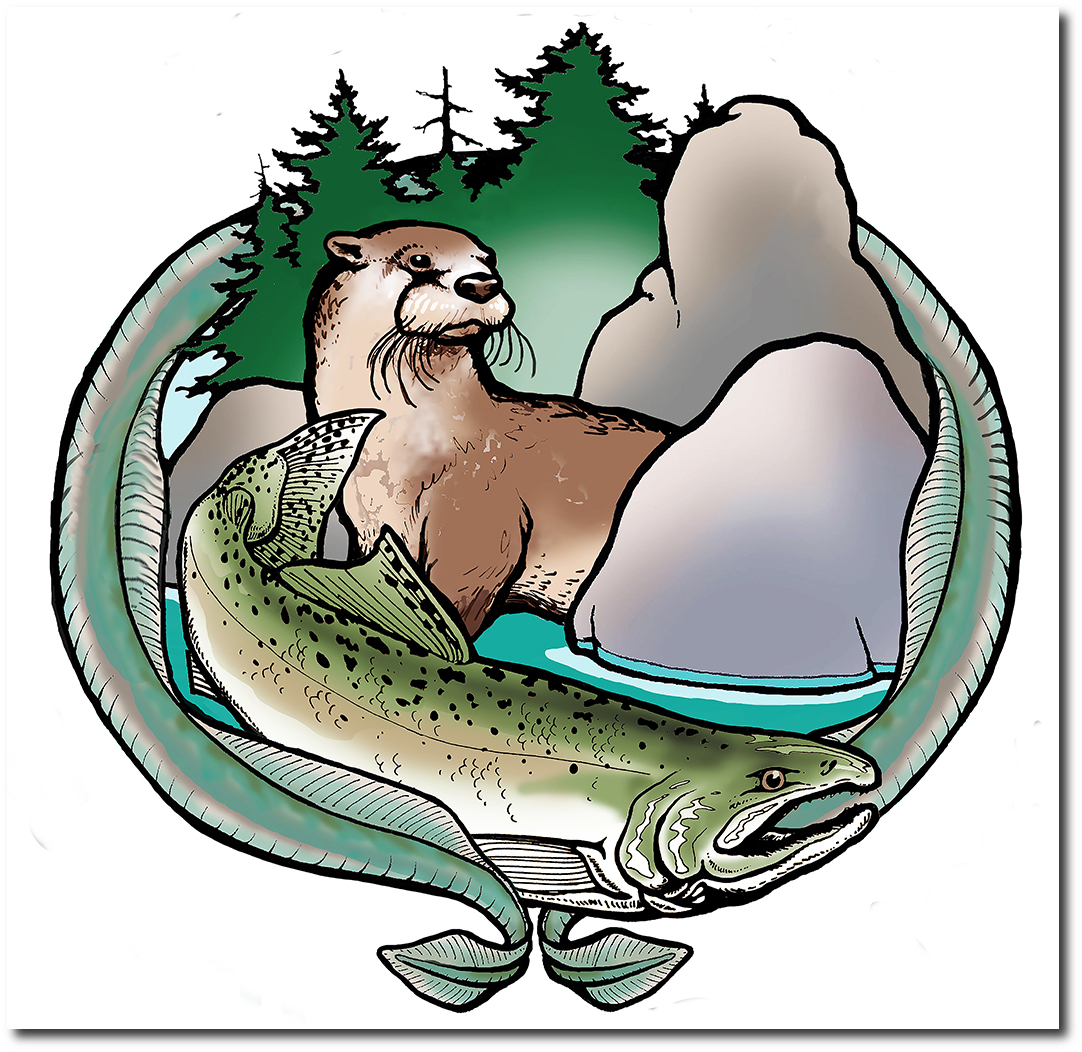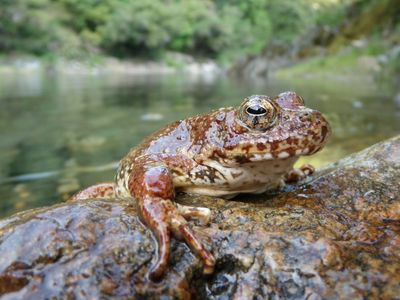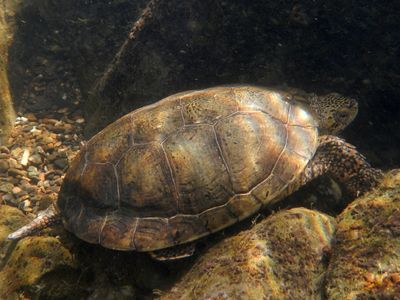Other Native Aquatic Life
The Eel River Recovery Project (ERRP) has strong interest in other aquatic vertebrate species because they are also indicators of the overall health of the river. Scientists refer to these species of amphibians and reptiles as herpetofauna. While many of the species reviewed below are at risk in other areas of California and the West, populations are thriving in the Eel River basin.
yellow-legged frogs
ERRP has had a focus on yellow-legged frogs because of the leadership of Dr. Sarah Kupferberg who studies the South Fork Eel River population. This species lays its eggs in warmer edge waters in spring. Their egg masses are black and range in size from a golf ball to a tennis ball in size. Yellow-legged frogs do not croak, except for the males when they call females to mate and only under water. Males are smaller than females and have adhesive thumbs on their front legs to attach to females when mating. Females glide downstream to select the spot for egg deposit while being fertilized.
We have worked annually with Dr. Kupferberg to monitor yellow-legged frog egg masses at Benbow State Park before and after dam removal See report . We helped her rescue frog egg masses before dam removal to avoid impacts. Monitoring in subsequent years confirmed no harm occurred (See articles)
Sarah has long term observations of yellow-legged frog population fluctuations based on egg masses per kilometer that show recruitment is flow driven. Learn more by watching her Power Point presentation. We would like to expand yellow-legged frog surveys to other Eel River sub-basins. Call 707 223-7200 to volunteer.
western pond turtle
The western pond turtle is the Eel River’s only native turtle species and they are widespread in the basin. Adults may live up to 70 years old and they may spend their whole life in one river reach. They migrate upslope from the river channel in winter to avoid flood impacts and where they burrow and hibernate. In summer they bask on logs and rocks and plunge into the water when approached. Turtles lay eggs in sand bars or upland burrows. Young turtles have an interesting adaptation to drought, they can burrow and estivate until falls rains.
Pacific Giant Salamander
This is the largest salamander in the Pacific Northwest with adults attaining a length of 12 inches. Larvae reside in cobble bedded streams and have gills that are purple or red. If food is particularly abundant, adults may maintain gills and stay under water, which is called neoteny. On land, Pacific giant salamanders are voracious predators with other frogs, slugs, insects and even small mammals on the menu. They take on a mottled color, bark or growl when threatened, and may inflict a painful bite. This species may sometimes have more biomass than fishes in headwater streams.
Rough Skinned Newt
This species is both terrestrial and aquatic, although they need to return to freshwater to spawn. Adults may burrow or reside under rotting logs when on land and retreat to water during dry seasons or drought. Newts prefer warm water and are not adapted to swift stream environments. To cope with flow fluctuations of the Eel River, newts haul out in winter and return once waters warm in late spring and summer. The bright orange coloration on the belly of the newt signifies to other animals that the newt is highly toxic.
Photo by Gary Nafis from California Herps http://www.californiaherps.com
Garter Snake
There are both terrestrial and aquatic garter snakes with the aquatic variety always retreating to water when threatened. Their life span in the wild is usually 4-5 years and they can grow to a length of over 3 feet. When hunting under water, adults flick their tongues to attract juvenile fish that they then consume. Yellow-legged frog larvae and adults can constitute a large part of the aquatic garter snake’s diet seasonally. Garter snakes give live birth and a female can produce from 3-12 offspring.
red-legged frog
The red-legged frog is the largest native frog species in the Western US with adults sometimes 5 inches long. This species prefers ponds to moving water, but may be found in Eel River riparian zones and off-channel pools. The underside of the legs are red and the back is brown or tan with dark blotches. The round smooth tympanum behind the eye is an identifying characteristic and is part of the frogs hearing system. Tadpoles are dark brown and yellow, with darker spots and may be as long as 3 inches. Tadpoles eat algae and microinvertebrates, young adults mostly invertebrates, and larger adults may also consume slugs, snails, tree frogs and even small mammals.
Photo by Gary Nafis from California Herps http://www.californiaherps.com
Pacific tree frog
The tree frog is best known for its breeding song. It is highly adaptable and ubiquitous in the Eel River watershed, especially in wet years. Adults may be mostly green or brownish, but all have a distinctive black eye stripe and suction cup on their toes







